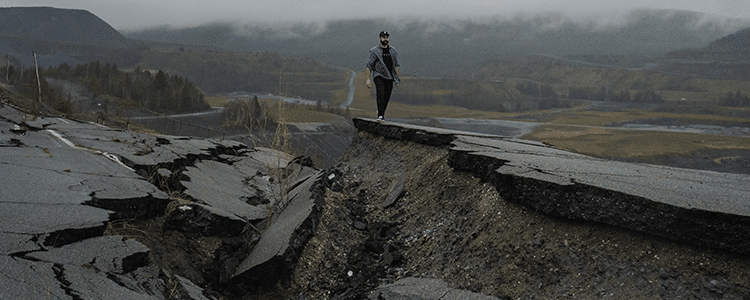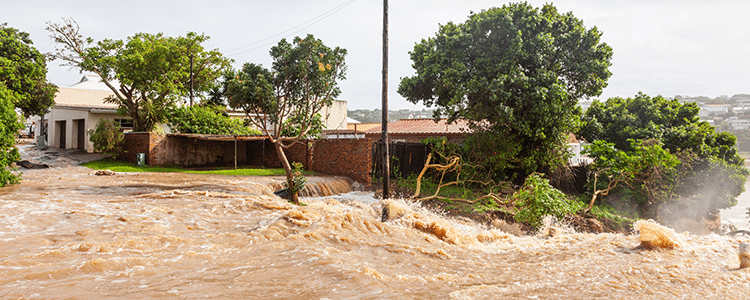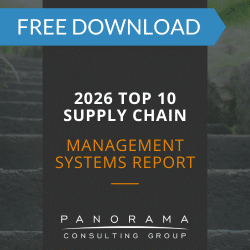Supply chains are comprised of many moving parts. At any time, an issue could occur that threatens to usurp the entire process flow. From changes in customer demand to raw material shortages and storage restrictions, there are many challenges you could encounter.
One particularly interesting challenge is natural disasters. These events can drain resources and halt operations. Hurricanes, earthquakes, floods, and droughts can lead to a range of operating risks.
By learning how to navigate such events, you can develop supply chain resilience. In this post, we’re sharing how you can improve your resilience so you’re fully prepared when a disaster strikes.
2025 Top 10 Manufacturing ERP Systems Report
Are you a mid- to large-sized manufacturing firm? This report is for you. Download it now to learn what kind of advanced functionality is available in the market today.
The Rising Frequency of Natural Disasters
No one can predict the weather with 100% certainty. However, there are many forecast models that reveal natural disasters are on an uptick in terms of frequency and intensity.
Examples of these types of events include:
- Heatwaves
- Fires
- Floods
- Agricultural droughts
- Ecological droughts
- Hurricanes
- Tropical cyclones
These natural disasters don’t just occur in remote areas. Often, they happen in bustling hubs of economic activity, including states like California and Texas.
As such, it’s imperative that you understand the steps to take if you ever find yourself in the middle of such a crisis. Successful supply chain management requires pivoting in the face of even extreme destruction.
The Effects of Natural Disasters on Supply Chains
Operational damage from natural disasters can take many forms. In the short term, these events impact your supply chain and any other firms within it. In the long term, these events can impair your competitive advantage and stunt your ability to grow.
Natural disasters can also affect your financial stability, in terms of both your physical structure and your bottom line. Though research shows that a supply chain disruption doesn’t always result in long-term economic loss, you may still need some form of short-term financing to keep your head above water.
3 Ways to Build Resilience
1. Extend Credit
How much stronger could you make your supply chain by allowing other companies to buy what they need form you on trade credit?
While you might benefit more from leveraging that extension yourself, this kind of generosity adds to the long-term resiliency of your supply chain. It allows you to keep customer relationships strong and customer loyalty high.
Often, your suppliers will be aware of what’s going on, and they might send additional trade credit your way. Then, you can turn right around and offer the same benefit to your customers.
It’s this symbiotic partnership that gives companies stability and helps them recover more quickly from the aftershock of a natural disaster.

2. Invest in Digital Planning
Besides extending trade credit to downstream companies, what are some other tactics you can use to mitigate supply chain risks?
Strategic planning is obviously key, but you also need the ability to turn on a dime. It can be difficult to predict these events, and when they occur, your teams must be able to make lightning-quick decisions and make them wisely.
Traditional planning tools don’t support this type of enterprise-wide coordination, but digital planning is a different story. The right software systems can give you visibility into every facet of your supply chain, so you always stay one step ahead.
For example, by implementing a supply chain management system you not only gain visibility into what the first tier is doing, but you can see the status of every tier. This allows you to spot and address issues long before they make it all the way to the top.
To get the most use out of these tools and keep your supply chain agile, be sure to plan frequently, shifting from monthly review cycles to biweekly or weekly meetings as required.
3. Hire the Right Talent
As you add more digital tools to keep your supply chain resilient, keep in mind that these systems won’t run themselves.
Increasingly, companies are hiring tech experts with deep experience in the digital realm. These experts are able to use ERP and SCM systems to understand what was impacted by the disruption and the scope of that impact. This often means navigating digital twins and other virtual reality (VR) simulations to get the answers they need.
Build Your Supply Chain Resilience and Survive Natural Disasters
You can’t always predict when a natural disaster will strike and affect your supply chain. However, by extending trade credit, investing in digital planning and visibility tools, and hiring tech-savvy talent, you can be better prepared when issues occur.
Supply chain resilience isn’t built overnight, but you can quickly develop it with the right strategies in place. We can help you navigate your options and next steps. Contact our enterprise software consultants below for a free consultation.














